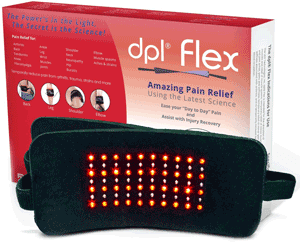This post is on the importance of acne classification.
Let’s start off with a quote from H. James Harrington. Heard of him? Probably not. He’s an international businessman and performance improvement guru.
“Measurement is the first step that leads to control and eventually to improvement. If you can’t measure something, you can’t understand it. If you can’t understand it, you can’t control it. If you can’t control it, you can’t improve it.”
Now excuse me while I go off on my philosophical high horse for a moment. All will be made clear once we get into the importance of measuring and classifying acne, and how to do it.
But first, a little theorizing to try to put your acne into context. It’s human nature to focus on oneself and one’s own problems, rather than to be concerned with others. This isn’t a popular view these days but I try to congratulate and applaud such selfishness. Putting oneself first is, quite literally, an “alpha” male quality.
Leading directly on from focussing on oneself, it’s also human nature to magnify the importance and severity of one’s own situation. To exaggerate in one’s own mind just how badly off one is compared to everyone else.
But is your acne really that bad?
Yes, it’s bad to you. I know exactly what it’s like to look at yourself in the mirror each day and despair at the new breakout which has sprung up overnight.
But I’ve come out the other side, thanks to a combination of important diet and lifestyle changes, and I now walk around and consciously assess the skin of people I come into contact with.
And you know what? There are an uncountable number of men and women I see with acne far worse than mine ever was.
And you know what else? It’s rarely the first thing I notice about them, and often not even the third or fourth. It’s hair, it’s clothes, it’s whatever.
With me, I’d like to think people noticed my bodybuilder physique and were impressed by it long before they noticed my acne.
That is, until I figured out how to build a killer physique (200lb at sub-10% bodyfat) without ruining my skin – in fact, turning bodybuilding into an anti-acne weapon.
If this sounds like something you’d enjoy, click here to learn how it’s done.
Acne classification
It’s very important that you can classify what type of acne you have, so that you can work out what treatment option will suit you best. For example, it’s no use trying to combat nodular, inflamed acne with a salicylic acid cleanser – it’s just not powerful enough for anything more than mild, non-inflamed lesions.
Grading acne severity is equally important for monitoring your progress. Once every two weeks or once a month you should be looking at your skin in detail, scoring your acne severity and recording the result in your acne journal.
That way, you’ll be able to objectively measure your progress (or not, as the case may be) and continue or adjust your treatment regimen.
Without a consistent scoring system, you’re liable to forget just how good or bad your skin was a month ago when you started doing whatever it is you’re doing to combat acne.
Of course, the other way to record your progress is to take pictures of your skin in a well-lit bathroom mirror.
The first thing to note is that there is still no standardised system of acne classification.
There are two ways of classifying acne:
- by type
- by severity
Classifying acne by type
One of the first ever acne classification systems was developed by Pillsbury, Shelley and Kligman in 1956. In their system there are four grades of acne:
- Grade 1: Comedones and occasional small cysts confined to the face.
- Grade 2: Comedones with occasional pustules and small cysts confined to the face.
- Grade 3: Many comedones and small and large inflammatory papules and pustules, more extensive but confined to the face.
- Grade 4: Many comedones and deep lesions tending to coalesce and canalize, and involving the face and the upper aspects of the trunk.
And in many respects, this acne classification system is fine to use today. It is somewhat simplistic, however, and has been evolved and updated over the years.
The most commonly-used system of acne classification today divides acne into two main types: non-inflammatory acne and inflammatory acne. Generally speaking, acne severity increases as you go down the list.
Non-inflammatory acne
- Closed comedones (blocked pores), whiteheads: skin-colored or white papules, raised, less than half an inch in diameter, little if any redness
- Open comedones, blackheads: black or dark-grey colored, open edge of pore is visible
Inflammatory acne
- Inflammatory pimples: Red, raised papules less than half an inch in diameter, may have whitehead. May also be sore to touch.
- Pustules: Small whitehead lesions filled with pus, typically extending only to the top layers of skin. Skin is red and often sore to touch.
- Nodules: Red lesions affecting deeper layers of skin, greater than half an inch in diameter, and sore to touch.
- Cysts: As with nodules, but filled with pus, dead skin cells and sebum. Often the trapped material can burst through the pore lining and spread inflammation over a wider area.
Classifying acne by severity:
There are about 18 different acne classification methods for scoring the severity of acne.
From a scientific point of view the one I favor is called the “Leeds Technique” and I like it for two reasons – it’s simple, and it’s reproducible, so there’s consistency when you’re scoring your acne over time to note improvements or setbacks.
Essentially, using a series of photographs you can grade acne from 0 (no acne) to 10 (the most severe breakout, where multiple cysts have converged into a kind of “super-cyst”. Can’t be much fun, that).
However, that’s still more complex than I think the average guy really needs.
In real life, the best way of judging how widespread or severe something is is simply to count it.
So count the number of pimples you have of each type and record the numbers in your acne journal at least once a month. You’d think this would take ages but even bad breakouts can be counted in a few minutes (if you’re having trouble keeping score just use a tiny dab of something non-irritating and preferably anti-inflammatory like Sudocrem to mark the pimples you’ve already counted).
Besides, all being well it’ll take you less time next month, and the month after, and soon a cursory look in the mirror will be long enough to count the odd spot you still get on your otherwise perfect skin.
To paraphrase H. James Harrington, once you can measure your acne, you can control it.
So, now you know how to classify and grade your acne, do you feel better about it?
Sometimes just measuring the real scale of a problem is enough to make it seem easier.
Suddenly you know what you’re dealing with, it’s not just “acne” anymore, it’s inflamed, grade 5, pustular acne.
Not only have you given yourself a yardstick against which to measure your soon-to-be swift progress, you’ve also cut out about 75% of the possible treatments – those designed for other types of acne, or more or less severe cases. And should be a huge weight off your shoulders straight away.
Hopefully by now, you’ve also realised that you do not possess the worst case of acne the world has ever seen, and you may even fall into the lower end of the spectrum – in which case, most people probably don’t take any notice of it at all.
So do yourself a favor and stop magnifying your acne problems in your mind. See it objectively, as bad as it is and no worse, and then begin to deal with it.


